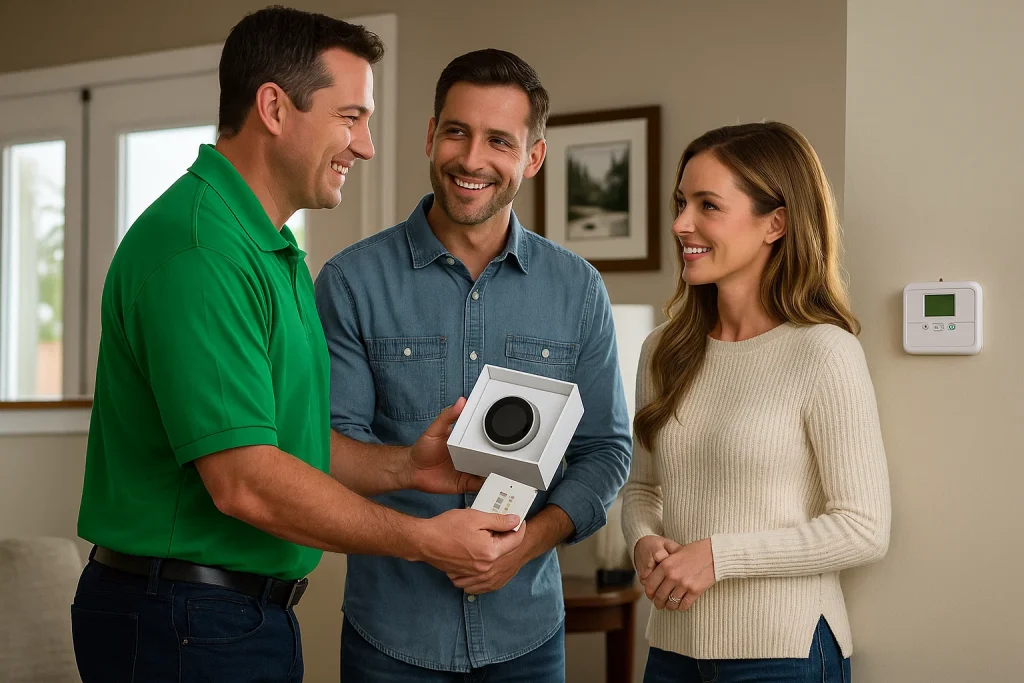As summer temperatures climb, keeping your home cool while managing energy costs becomes a top priority for many homeowners. Enter the smart thermostat: a modern, connected device promising to optimize your heating and cooling system for comfort and efficiency.
But are smart thermostats truly worth the investment when it comes to summer savings? Let’s dive into how these devices work, their potential benefits, and whether they make sense for your home and budget.

What Is a Smart Thermostat?
A smart thermostat is a Wi-Fi enabled device that controls your home’s heating and cooling system. Unlike traditional programmable thermostats, smart thermostats learn your schedule, preferences, and even respond to weather conditions to adjust temperatures automatically.
You can control them remotely via smartphone apps, voice commands, or web portals. Many models include features such as:
- Adaptive temperature scheduling
- Geofencing to detect when you’re home or away
- Energy usage reports
- Integration with smart home systems like Alexa, Google Assistant, or Apple HomeKit
How Smart Thermostats Can Help You Save in Summer
1. Optimize Cooling Schedules
Smart thermostats learn when you’re typically home or away and adjust cooling accordingly. For example, the system can raise the temperature slightly during the day when no one’s home and cool down just before your return, ensuring comfort without wasting energy.
2. Reduce Energy Waste
By avoiding unnecessary cooling during unoccupied hours, smart thermostats cut down on energy consumption. Traditional thermostats may be left at a constant temperature or programmed incorrectly, leading to wasted power.
3. Monitor Usage and Detect Issues
Many smart thermostats provide real-time energy usage data and alerts if your HVAC system is working harder than normal, indicating potential maintenance needs. Early detection helps prevent costly repairs and inefficiency.
4. Integrate With Other Smart Devices
Smart thermostats can sync with sensors, window shades, or even smart vents to optimize airflow and reduce cooling load, further enhancing efficiency.
Potential Savings: What Does the Data Say?
According to the U.S. Department of Energy, properly programming your thermostat can save you about 10% a year on heating and cooling costs. Smart thermostats, with their learning algorithms and remote control capabilities, often exceed these savings.
Are Smart Thermostats Right for Your Home?
Consider Your Lifestyle
Smart thermostats work best for people with irregular schedules, frequent travel, or those who want to optimize comfort without manual adjustments. If you’re often away during the day or like having remote control of your home temperature, the convenience and savings can add up.
Compatibility and Installation
Before purchasing, ensure your HVAC system is compatible with the smart thermostat model you want. Some systems, especially older units, may require additional equipment and you should always invest in professional installation.
Upfront Cost vs. Long-Term Savings
Smart thermostats typically cost between $100 and $300. While this is more than a standard thermostat, the energy savings and rebates offered by many utility companies can help offset the initial expense.
If you’re ready to embrace technology that adapts to your lifestyle and helps you stay cool while keeping costs down, a smart thermostat could be a worthwhile investment this summer.
For HVAC service you can rely on, trust Mahalo Heating and Air Conditioning. We’re proud to serve Douglas County with excellence, one customer at a time!











